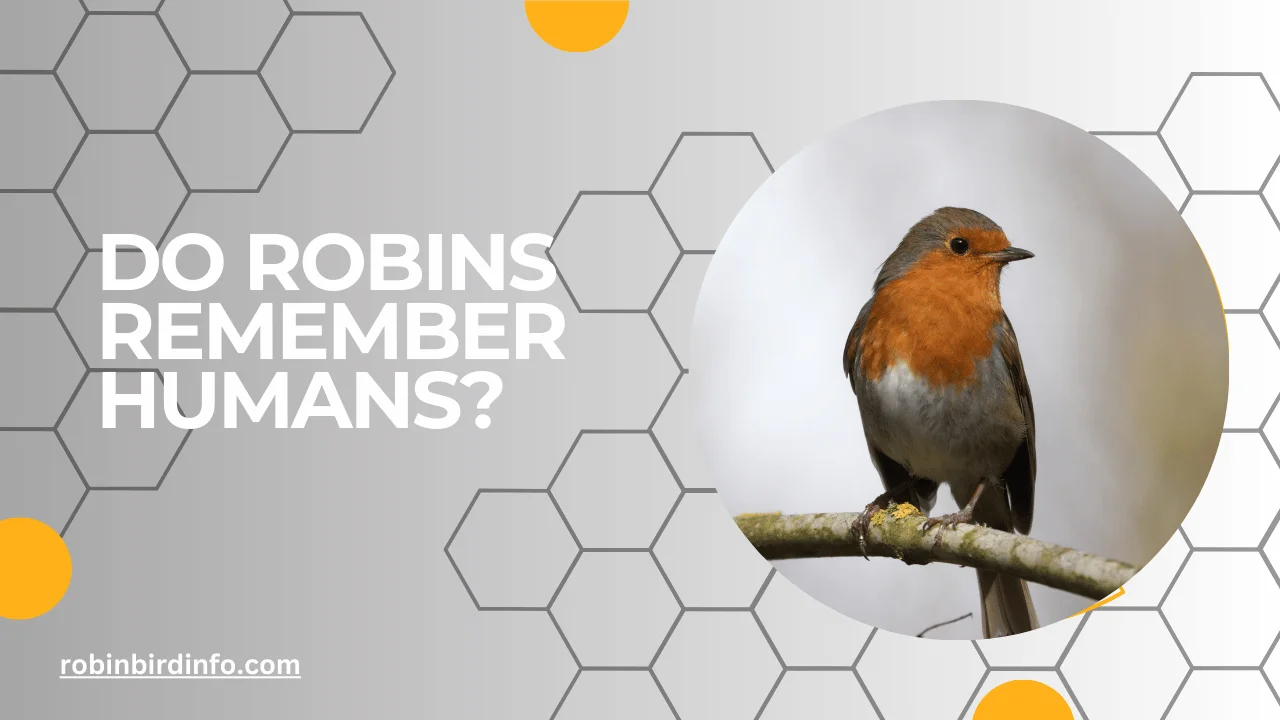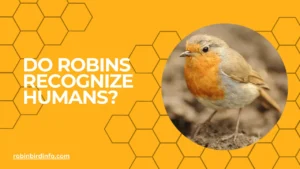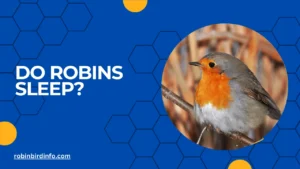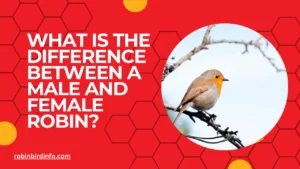We all know the heartwarming image: a Robin perched on a bird feeder, happily devouring a seed.
But have you ever wondered if these cheerful songbirds recognize the human behind the generosity? Perhaps you’ve noticed a Robin seemingly unafraid of your presence as you refill the feeder, while others dart away at the first hint of movement. Does this indicate individual recognition in Robins?
Can they differentiate between friendly feeders and those pesky garden hose wielders?
Understanding Robin memory and their ability to recognize humans is more than just a trivia tidbit. It sheds light on the fascinating world of bird cognition and can influence our interactions with these feathered neighbors. Imagine fostering a friendly relationship with a Robin family, earning their trust and witnessing their unique personalities.
Conversely, consider the impact of unintentional (or intentional!) harassment on these birds. By delving into Robin memory, we can learn to coexist more harmoniously with these delightful creatures, creating a backyard haven for both humans and birds.
So, grab a cup of coffee, settle in by your window, and get ready to explore the surprising world of Robin memory and human interaction!
Contents
Section 1: Bird Cognition and Memory
Birds, often underestimated for their intelligence, possess remarkable cognitive abilities. Their brains, though smaller than those of mammals, are highly specialized for complex tasks. The hippocampus and neocortex are two key brain regions involved in memory and learning in birds. These structures allow birds to form memories, recognize individuals, and solve problems.
Individual recognition is a complex cognitive ability that enables animals to distinguish between different individuals within their species. This ability is essential for various social behaviors, including mate choice, parental care, and territorial defense.
Section 2: Robin Behavior and Individual Recognition
Robins exhibit a range of behaviors that suggest they can recognize individual birds. Territorial behavior involves defending a specific area, and Robins often recognize and respond to the vocalizations and visual cues of neighboring individuals.
Mate recognition is crucial for successful breeding. Robins may use visual cues, vocalizations, and possibly olfactory cues to identify and recognize their mates. This ability ensures that they pair with compatible individuals and invest their energy in successful reproduction.
Parental care requires Robins to recognize their own offspring. They use visual and auditory cues to identify their chicks and distinguish them from others. This allows them to provide appropriate care and protection to their young.
Section 3: Experimental Evidence
While research on bird cognition is ongoing, numerous studies have provided evidence for individual recognition in various bird species. Laboratory studies have demonstrated that birds can learn to recognize individual humans and respond to their specific cues.
Field studies have shown that birds, including Robins, can form social bonds with specific individuals and exhibit preferential behavior towards familiar individuals. However, the specific mechanisms underlying individual recognition in Robins are still not fully understood.
Limitations of Research Studying bird cognition can be challenging due to the complex nature of animal behavior and the difficulty of conducting controlled experiments. Additionally, interpreting the results of field studies can be subjective and prone to bias.
Section 4: The Impact of Human Interaction
Habituation and Sensitization are two important concepts in animal behavior. Habituation occurs when an animal becomes less responsive to a repeated stimulus, while sensitization involves an increased response to a repeated stimulus. Robins can habituate to human presence, especially if they are regularly fed or observed. However, negative interactions, such as harassment or injury, can lead to sensitization and increased aggression towards humans.
Feeding behavior can influence the relationship between Robins and humans. Regular feeding can lead to increased familiarity and trust, potentially leading to individual recognition. However, it is important to feed birds responsibly and avoid creating dependency.
Negative interactions with humans, such as being chased or trapped, can have a lasting impact on Robin behavior. Birds may become more wary of humans and avoid human-dominated areas.
Section 5: Conservation Implications
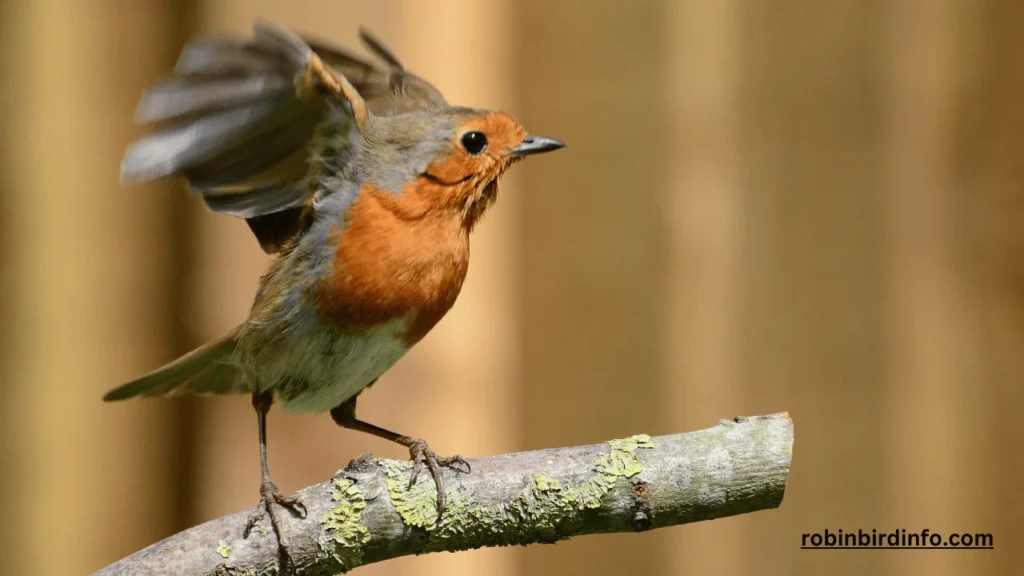
Minimizing human disturbance is crucial for protecting bird populations and their habitats. By avoiding disturbances to nesting sites and foraging areas, we can reduce stress and promote healthy bird populations.
Promoting bird-friendly practices can create a more welcoming environment for birds. Planting native plants, providing clean water sources, and reducing the use of pesticides can benefit birds and other wildlife.
Citizen science and research can help us better understand bird behavior and ecology. By participating in birdwatching and reporting observations, citizen scientists can contribute to valuable research and conservation efforts.
Conclusion
While the extent of Robin memory and individual recognition is still being explored, it is clear that these birds possess cognitive abilities that allow them to form social bonds, recognize individuals, and adapt to their environment.
By understanding the factors that influence Robin behavior, we can appreciate these fascinating birds and take steps to protect them.
By minimizing human disturbance, promoting bird-friendly practices, and supporting conservation efforts, we can ensure the continued survival of Robin populations and their valuable contributions to our ecosystems.
FAQ’s
Can Robins recognize individual humans?
While there is limited scientific research on this specific topic, anecdotal evidence suggests that Robins may be able to recognize individual humans, especially those who regularly feed or interact with them.
Do Robins remember where they’ve found food?
Yes, Robins have excellent spatial memory and can remember the location of food sources. They may return to specific trees, shrubs, or feeders to find food.
How long is a Robin’s memory?
The duration of a Robin’s memory can vary. They may remember specific events or individuals for days, weeks, or even months.
Can Robins learn to fear humans?
Yes, Robins can learn to fear humans if they have negative experiences, such as being chased or injured. This can lead to increased wariness and avoidance behavior.
Can Robins distinguish between different human voices?
While there is no definitive scientific evidence, it is possible that Robins may be able to distinguish between different human voices based on pitch, tone, and other vocal cues.
How can I avoid scaring Robins away?
To avoid scaring Robins, move slowly and quietly around them. Avoid sudden movements or loud noises. It’s also important to respect their personal space and avoid interfering with their nesting or feeding activities.

